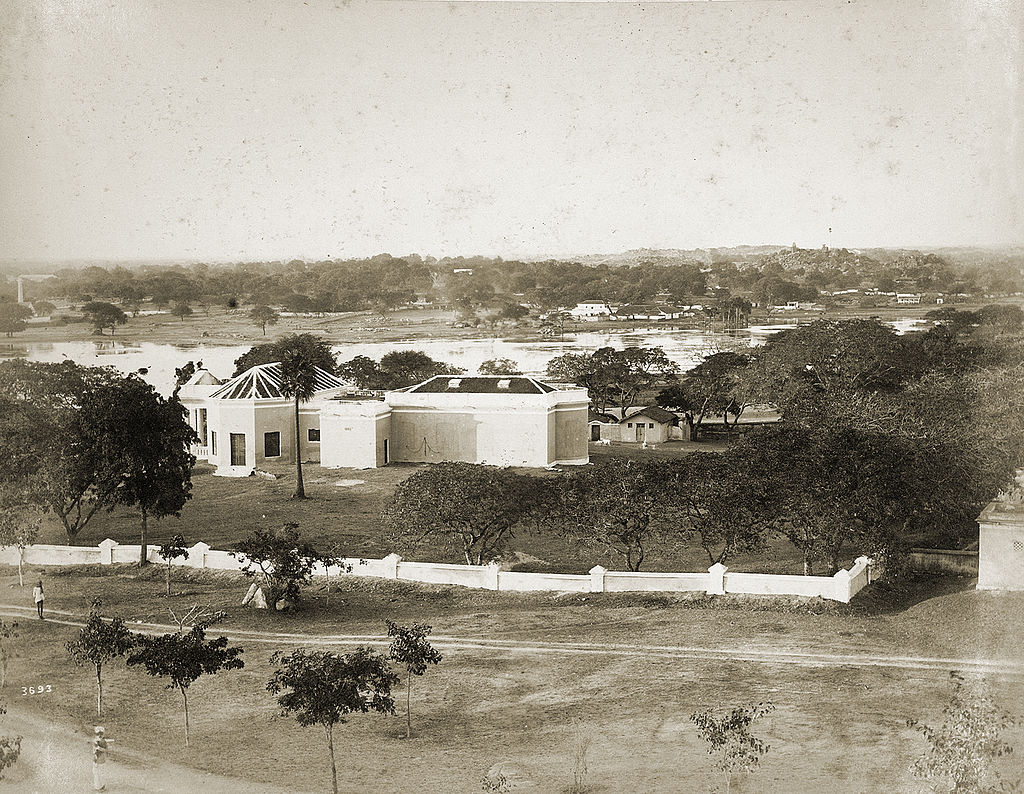Gosha Mahal : a Qutub Shahi palace at Hyderabad
The Qutub Shahis established the city of Hyderabad and built numerous palaces. However none exist today, mostly destroyed during Mughal invasions. The palaces can be seen in the backgrounds of miniature paintings depicting the rulers. However one palace the Goshamahal which was built as a secluded place for the royal women survives somewhat even today. It is now being used by the Freemasons of Hyderabad and Secunderabad. The palace was given to them by the Nizam VI in 1872 erstwhile ruler of Hyderabad.
The palace was started by Sultan Abdullah Qutub Shah and completed by Sultan Abul Hasan Qutub Shah, the last ruler of Golconda dynasty around 1684. During its prime the palace had 1000 rooms with a big hauz in in the centre of the palace. During the Mughal campaign of the Deccan, Emperor Aurangzeb installed his son Prince Shah Alam there and the palace served as the Mughal headquarters for South India. It is in two storeys with high wooden doors and halls on both floors. It has ornate mortar grills and intricate jaali or trellis work on the arches, very large balustrades, a huge banquet hall (ground floor) and the portraits of Nizam VII, images of many Freemasons and Freemason regalia on its walls. A list mentions names of Socrates, Plato, Pythagoras, Henry Ford, Clive Lloyd, Swami Vivekananda, C. Rajagopalachari, Fakhuruddin Ali Ahmed and Madhav Rao Scindia.

Sultan Abul Hasan Qutub Shah, last Qutub Shahi ruler.

Prince Shah Alam, son of Mughal Emperor Aurangzeb.

Goshamahal Baradari, photograph, Raja Deen Dayal,1890.

Goshamahal Baradari, photograph, 2002.
(Pic from The Hindu)
Freemason Hall, Goshamahal Baradari, image, 2006.
(Pic from The Hindu)References :
1. wikipedia.org
2. http://www.masonictemples.in/hyderabad
3. https://www.thehindu.com/thehindu/mp/2002/11/07/stories/
4. Images via Wikimedia Commons
Posted by :
Soma Ghosh
Ⓒauthor


